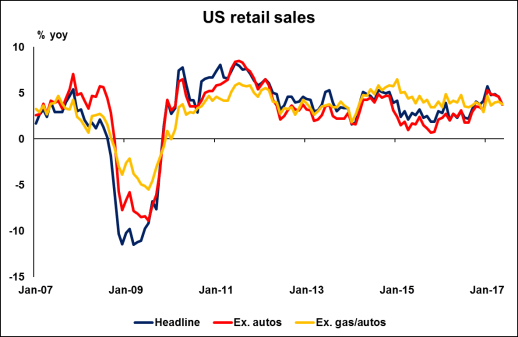Next week’s market movers
- In the US, we have Fed Chair Yellen’s semi-annual testimony before Congress. Market participants may look for hints with regards to B/S normalization and the timing of the next rate increase.
- We expect the BoC to remain on hold, despite the latest hawkish remarks that a hike may come sooner than previously anticipated.
- We also get key economic data from China, Norway, Sweden, the UK, and the US.
On Monday, during the Asian morning, China’s CPI and PPI for June are due to be released. The forecast is for both rates to have remained unchanged. Our own view is that there is the possibility for upside surprises in both prints. We base this on the nation’s official manufacturing PMI for the month, the price components of which both increased for the first time since December.
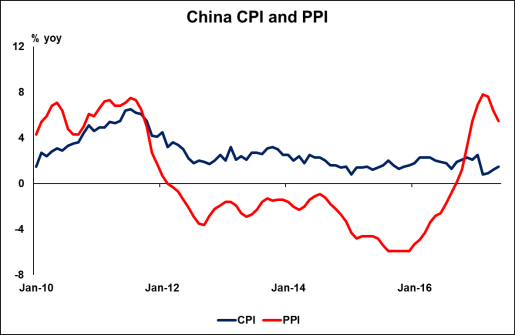
During the European day, we get Norway’s CPI data for June, though no forecast is available yet. Despite the steep slowdown in inflation, at its latest meeting the Norges Bank removed its easing bias and noted that it now expects the key policy rate to remain at the current level, while it revised slightly higher its expected rate path for 2017 and 2018. What’s more, the Bank noted that inflation is lower than expected and may continue to drift lower in the months ahead, but increased activity and receding unemployment suggest that inflation will pick up. Therefore, even if inflation slows again, it may not be particularly worrisome for policymakers, as it would still be in line with the Bank’s outlook.
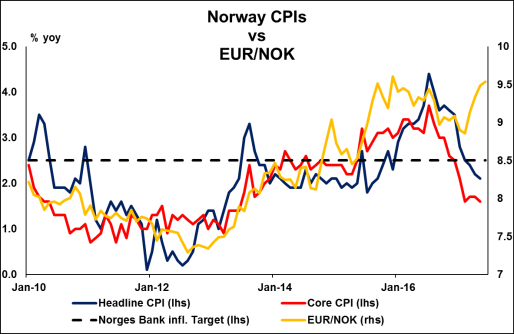
On Tuesday, we don’t have any major events or indicators on the agenda.
On Wednesday, the market will turn its attention to the Bank of Canada rate decision. At its latest meeting, the Bank kept its policy unchanged, while the tone of the meeting was neutral overall, indicating that although uncertainties continue to cloud the Canadian outlook, the economy’s adjustment to lower oil prices is almost complete and recent economic data such as business investment have been encouraging. A few weeks after that gathering, BoC Deputy Governor Wilkins indicated that the Bank will start assessing whether all of the monetary stimulus currently in place is still required, while at last week’s ECB forum on Central Banking, Governor Poloz said that low interest rates have "done their job".
Although the Governor did not comment on future policy plans, the market has started recalibrating its expectations with regards to the Bank’s next move. Before we get any comments from these two key officials, the implied probability for a hike at the July meeting was resting near 0%. However, at the time of writing, – according to Canada’s Overnight Index Swaps – more than half of market participants expect the Bank to lift interest rates for the first time in 7 years next week.
Indeed, recent economic data have been encouraging. Economic growth was impressive in Q1, while April’s mom data showed that the economy entered Q2 on a decent footing. The stellar retail sales for April and the strong employment reports for April, May and June enhance that view. Having said that though, we don’t share the view of those who expect a rate increase next week. Yes, we have strong signals that a hike may come sooner than previously anticipated, but given how fast the core CPI rate has been falling in recent months, we doubt that this will happen next week. Conditional upon further improvement in economic data and a rebound in underlying inflationary pressures, we believe that policymakers may choose the last quarter of the year for raising borrowing costs.
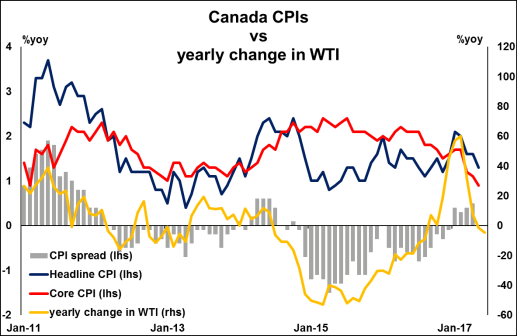
In the US, the main event will be Fed Chair Yellen’s semi-annual testimony on monetary policy before the House of Representatives Financial Services Committee of Congress. She will address the same testimony before the Senate Banking Committee on Thursday. Usually the Fed’s semi-annual monetary policy report is released on the day Yellen testifies, but this time around the report will be published a few days earlier, specifically later today. As such, we don’t expect any major market reaction as she presents the report. Nevertheless, market participants may pay extra attention to the Q&A session. In particular, they may be on the lookout for any fresh signals with regards to balance sheet normalization and the timing of the next rate increase. Having said that though, we believe that what will play the biggest role in market expectations with regards to the Fed’s future plans are the nation’s CPIs due out on Friday.
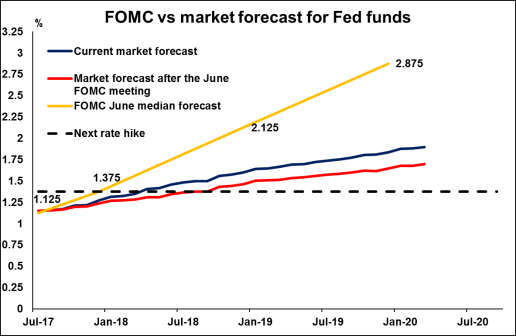
As for the indicators, we get UK employment data for May, though no forecast is available yet. Our own view is that the unemployment rate likely remained unchanged, while average weekly earnings may have risen at the same pace as previously, with risks skewed towards an acceleration. The nation’s services PMI for May indicated that the rate of employment growth across the sector was little changed since April, and that the reported rise in input prices was partly attributed to higher staff salaries. Considering that the service-sector accounts for roughly 80% of the nation’s GDP, we consider it a decent gauge of the overall economy. However, we see it very unlikely for the wage growth rate to overcome May’s inflation rate of 2.9%, so the UK is likely to experience negative real wages for the 4th consecutive month. In fact, real wages are accelerating to the downside, something that raises concerns over household spending.
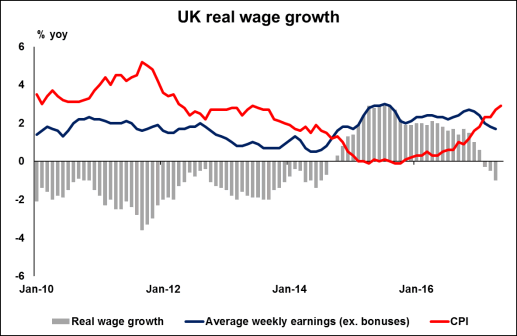
On Thursday, during the Asian morning, China’s trade balance for June is due to be released and expectations are for the nation’s trade surplus to have increased. Exports are forecast to have risen at the same pace as the previous month, while imports are expected to have slowed. Our own view is that the risks surrounding both figures are tilted to the upside. The official manufacturing PMI suggested stronger foreign demand during the month, with new export orders increasing by a larger margin than overall new orders, while the import index rose to a four-month high.
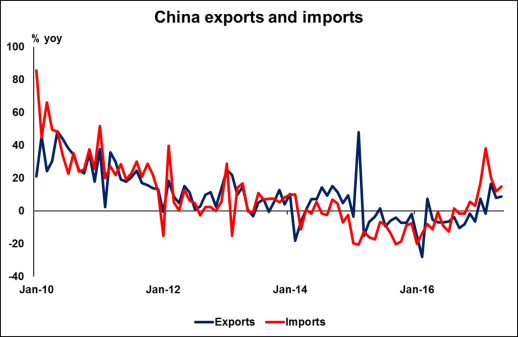
During the European session, we have Sweden’s CPIs for June, but no forecast is available yet. At its latest policy meeting, the Bank noted that inflation has recently been slightly higher than expected and that the risks of setbacks abroad are thought to have decreased, which makes it less likely than before for the repo rate to be cut in the near term. Nevertheless, officials clearly pointed out that this does not rule out any further cuts in the period ahead. The Executive Board remains prepared to implement further monetary policy easing if necessary to stabilize inflation and safeguard its target. Having all these in mind, we believe that CPI data could be of major importance for investors as an increase in underlying inflation pressures may revive speculation that the Riksbank is likely to remove its interest rate easing bias soon, following in the footsteps of the Norges Bank and the ECB.
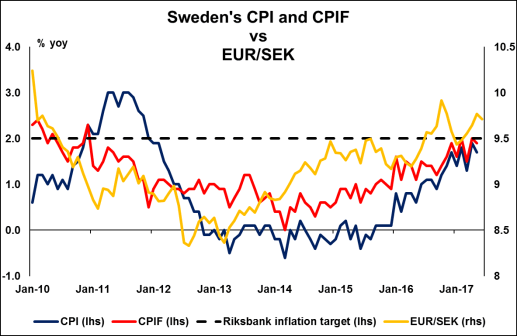
Finally on Friday, we get US CPI and retail sales data, both for June. Getting the ball rolling with the CPIs, the headline rate is expected to have slid for the 4th consecutive month, while the core rate is anticipated to have held steady after falling for four months in a row as well. Given the latest tumble in the yearly change of oil prices, we do not expect the decline in the headline rate to be particularly worrisome. We believe that investors will have their gaze locked on the core rate. The price sub-index of the ISM manufacturing PMI showed that prices continued to increase, but at a slower pace than the previous month, while the respective sub-index of the non-manufacturing PMI showed a rebound in prices after recording a decline in May. These mixed signals support somewhat the case of an unchanged core CPI rate, which is unlikely to clear the picture with regards to the Fed’s future plans. A decent rebound is needed to increase the probability for another rate increase by the end of this year.
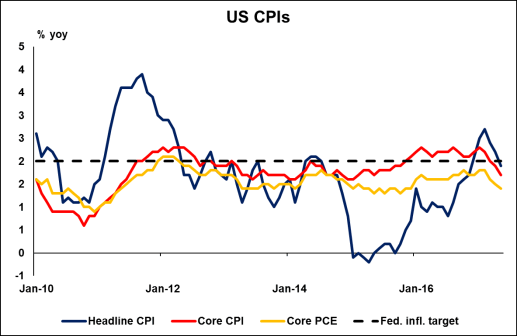
As for the US retail sales, the forecast is for both the headline and core rates to have rebounded from the previous month. The consensus for a rebound is supported by both the Conference Board and U of M consumer sentiment indices for the month, both of which rose. A rebound in sales combined with the better-than-expected ISM PMIs and the decent employment report, all for June, may be early signals that the US economy ended the second quarter on a solid footing. This may confirm those who viewed the latest softness in US data as transitory.
